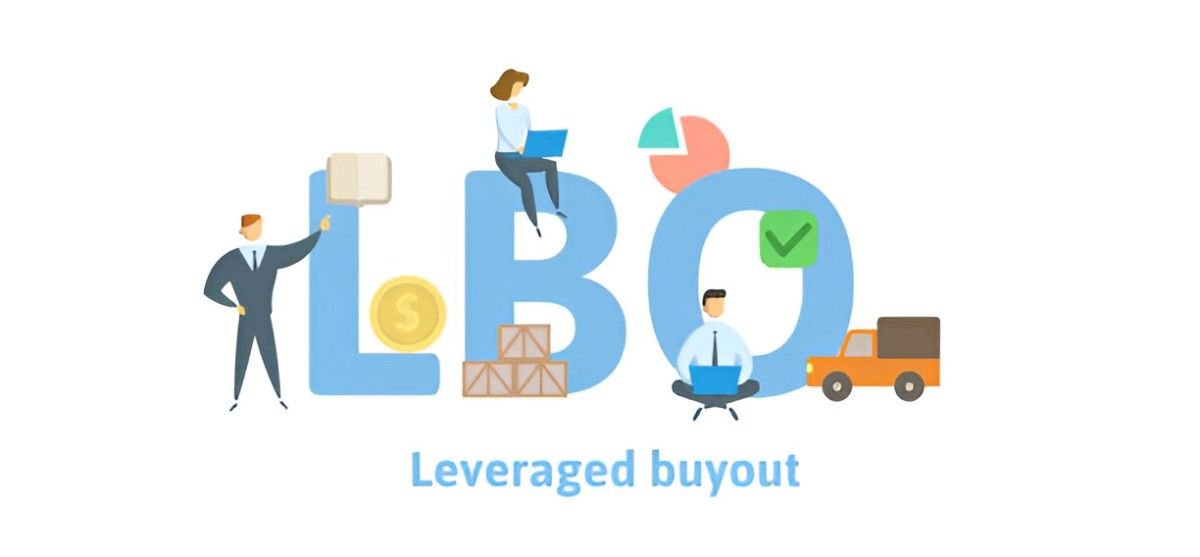Leveraged Buy-Outs (LBOs) are a popular method of acquiring a company using a significant amount of borrowed money. This technique is widely used in the world of finance and business acquisitions and has become a critical tool for investors and firms looking to take over businesses. Let’s explore what LBOs are, how they work, and why they are important.
Table of Contents
What is a Leveraged Buy-Out?
A Leveraged Buy-Out (LBO) is a financial transaction where a company is purchased primarily using borrowed funds. In an LBO, the assets of the company being acquired often serve as collateral for the loans taken to finance the buy-out. This allows the acquiring company or group to purchase the target company with a relatively small amount of their own capital.
Key Characteristics of LBOs:
- High Debt Usage: The majority of the purchase price in an LBO is financed through debt. This can include loans from banks, bonds issued to investors, or other forms of debt instruments.
- Collateralized Assets: The acquired company’s assets typically act as collateral for the loans, reducing the lender’s risk.
- Equity Contribution: While most of the purchase is financed through debt, the acquiring party also contributes some equity, though it is usually a smaller portion compared to the debt.
How Does a Leveraged Buy-Out Work?
- Identify the Target Company: The first step is to identify a company that has stable cash flows, valuable assets, and potential for growth or restructuring.
- Secure Financing: The acquiring party arranges for debt financing from banks, private equity firms, or bond markets. The terms of the loans are negotiated, including interest rates and repayment schedules.
- Purchase the Company: The acquired company’s assets are often used as collateral for the loans. The acquisition is completed using the borrowed funds along with the acquirer’s equity contribution.
- Manage the Company: Post-acquisition, the focus is on managing the company to ensure it generates sufficient cash flow to service the debt and, ideally, grow the business.
- Exit Strategy: The acquiring party plans an exit strategy, such as selling the company, taking it public through an IPO, or merging it with another entity, to repay the debt and realize a profit on their investment.
Importance of LBOs:
- Access to Capital: LBOs enable the acquisition of companies without needing to commit large amounts of capital upfront.
- Potential for High Returns: By using leverage, investors can amplify their returns if the acquired company performs well.
- Strategic Restructuring: LBOs often involve restructuring the acquired company to improve efficiency, profitability, and market position.
Example of a Leveraged Buy-Out:
Consider Kohlberg Kravis Roberts & Co. (KKR), a prominent private equity firm known for its use of LBOs. One of the most famous LBOs was KKR’s acquisition of RJR Nabisco in 1989. This deal was valued at $31.4 billion, making it the largest LBO at that time. Here’s a simplified breakdown of how it worked:
- Target: RJR Nabisco, a large conglomerate in the food and tobacco industry.
- Financing: KKR arranged for a combination of debt financing and their own equity. The debt was secured against RJR Nabisco’s assets.
- Purchase: KKR successfully acquired RJR Nabisco using the borrowed funds.
- Management: Post-acquisition, KKR focused on improving RJR Nabisco’s operations to enhance profitability.
- Exit Strategy: Over time, KKR planned to repay the debt through the company’s cash flows and eventually aimed to sell off parts of RJR Nabisco to recoup their investment and earn a profit.
Advantages and Risks of LBOs:
Advantages:
- High Returns: If the acquired company performs well, the returns on investment can be substantial due to the leverage used.
- Control and Influence: LBOs allow investors to gain significant control over the acquired company, enabling strategic decisions to enhance value.
Risks:
- High Debt Levels: The significant debt load increases financial risk, especially if the acquired company’s cash flows are insufficient to meet debt obligations.
- Economic Downturns: In economic downturns, companies acquired through LBOs may struggle to service their debt, leading to potential financial distress or bankruptcy.
- Management Challenges: Effectively managing and restructuring the acquired company to ensure it generates sufficient cash flow can be challenging.
Conclusion:
Leveraged Buy-Outs are a powerful financial strategy that allows investors and companies to acquire other businesses using significant amounts of borrowed money. While LBOs can offer high returns and strategic control, they also come with substantial risks due to the high levels of debt involved. Understanding the mechanics and implications of LBOs is crucial for anyone involved in finance and business acquisitions.





